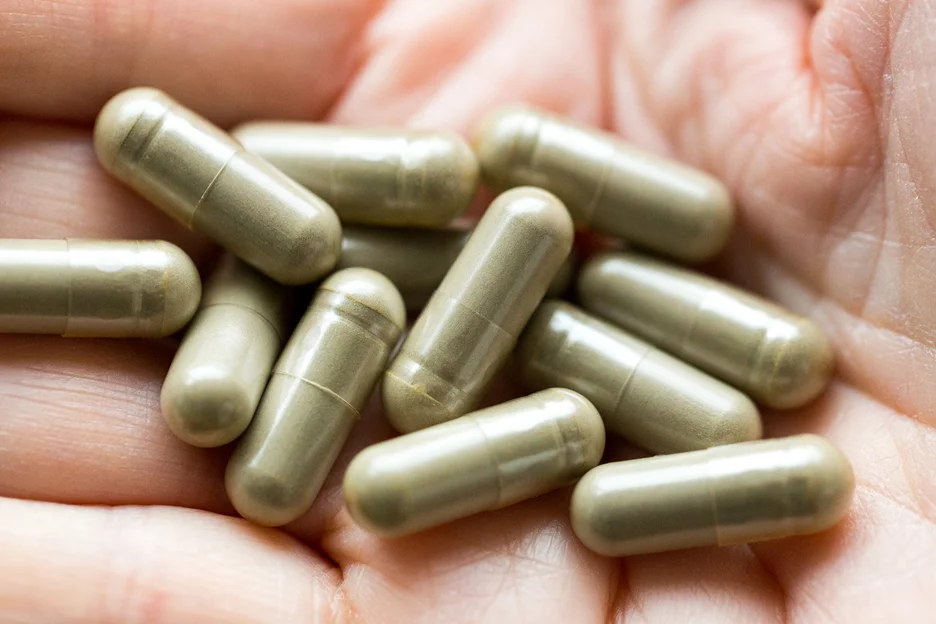Taming the Histamine Storm: How Diamine Oxidase Inhibitors Impact Your Health
Ever wonder why that leftover pizza gives you stomach cramps? For many people with histamine intolerance, eating foods high in histamines like aged cheeses, cured meats, and pickled vegetables can lead to unpleasant gastrointestinal issues.
Histamines are compounds primarily responsible for the allergic response, but they also play a role in digestion. An enzyme called diamine oxidase or DAO is needed to properly break down histamines in the gut.
When DAO levels are low or impaired, excess histamines circulate in the bloodstream, causing symptoms like abdominal pain, rashes, runny nose, and anaphylaxis. Luckily, DAO inhibitors are emerging as an effective treatment for maintaining healthy histamine levels and managing these unpleasant intolerances.
Diamine Oxidase: Function and Activity
As mentioned, diamine oxidase or DAO is the primary enzyme responsible for breaking down histamines in the gut.
DAO has a high affinity for histamines and quickly converts them into inactive metabolites that are excreted in urine. This enzymatic activity helps maintain balance in histamine levels and prevents excess histamines from entering the bloodstream after eating foods containing them.
DAO is produced in the endoplasmic reticulum and found in greatest concentrations in epithelial cells lining the small intestine and colon. These areas are crucial for digesting nutrients and absorbing what we need, so having adequate DAO activity here is essential.
When DAO is impaired, undigested histamines can seep through the intestinal lining into the bloodstream, resulting in inflammation and the symptoms of histamine intolerance.
Another enzyme called histamine N-methyltransferase also participates in degrading histamines, but it has a lower affinity so DAO plays the dominant role, especially after meals. By carefully controlling the levels of histamine exposure while eating and properly maintaining DAO and other histamine-metabolizing enzymes, we can achieve balance and optimize health, energy, and well-being.
Histamine Intolerance: Causes and Symptoms
Histamine intolerance develops when your body has difficulty breaking down histamines properly, leading to excess histamines in the bloodstream that cause unpleasant symptoms. This can happen for a few reasons, including reduced activity of the DAO enzyme responsible for degrading histamines, or increased histamine content in foods.
Foods high in naturally occurring or added histamines include aged cheeses, cured meats, pickled vegetables, alcohol, chocolate, and certain additives like MSG. For those with histamine intolerance, eating these histamine-rich foods can overwhelm the body’s ability to metabolize them, resulting in symptoms. Some common signs of excess histamines include:
| Symptoms | Description |
| Abdominal pain, bloating, diarrhea or constipation | Histamines stimulate gut activity and inflammation. |
| Mood changes | Histamines regulate arousal and alertness, so excess amounts can lead to anxiety, irritability or depression. |
| Allergic reactions | Although an allergy, histamine intolerance results from excess histamines rather than immune response. You may experience hives, itching, swelling or rashes. |
| Fatigue and brain fog | Too many histamines circulating in the blood can make you feel sluggish and impair concentration, focus and clear thinking. |
By understanding potential causes and recognizing symptoms of histamine intolerance, you can make improvements through diet changes, digestive support, and in some cases medication like DAO inhibitors or antihistamines.
Failing to properly manage excess histamines can lead to chronic inflammation, autoimmunity, and other health issues over time. So paying attention to histamine levels in your body and making adjustments as needed is key to wellness and vitality.
Diamine Oxidase Inhibitors: Types and Effects

DAO inhibitors work by reducing the activity of the diamine oxidase enzyme, which then allows excess histamines to build up in the body. There are a few categories of compounds that can inhibit DAO to different degrees. Some common examples include:
Foods high in naturally formed histamines: Aged cheeses, cured meats, pickled vegetables, tomatoes, spinach, etc. These provide more histamines for DAO to break down, sometimes overpowering its ability.
Alcohol: Ethanol directly inhibits DAO activity and impairs digestion, allowing more histamines to enter the bloodstream from foods and gut bacteria.
Medications: Some diuretics, pain relievers, and antidepressants have been shown to inhibit DAO as a side effect or unintended consequence.
DAO-specific inhibitors: New drug treatments are being researched that directly target and block the DAO enzyme. These controlled inhibitors aim to raise histamine levels for therapeutic benefit under medical supervision.
When DAO inhibition occurs, the enzyme preferentially breaks down certain histamine substrates over others, leading to changes in the concentrations and types of histamines present.
This can cause histamine receptors to become overstimulated, resulting in a variety of symptoms. Higher histamine levels may also occur due to reduced metabolism of ingested or gut-derived histamines.
By understanding the types of DAO inhibitors and how they work, you gain more control over your symptoms and health.
Histamine Receptors and Inflammatory Bowel Disease
Histamines elicit their effects by binding to histamine receptors found throughout the body, especially in cells of the immune and gastrointestinal systems. There are four main types of histamine receptors:
| Histamine Receptor Types | Description |
| H1 receptors | Located on many cell types including immune cells, smooth muscle, and endothelial cells. They mediate inflammatory, allergy and GI responses to histamines. |
| H2 receptors | Found on parietal cells in the stomach and some immune/inflammatory cells. They influence acid secretion and inflammatory signaling. |
| H3 receptors | Present on nerve cells, lymphocytes, and mast cells. They suppress histamine release and neurotransmission. Activation of H3 receptors reduces histamine signaling via a negative feedback loop. |
| H4 receptors | Found on hematopoietic cells including eosinophils, basophils, Th2 cells, mast cells, and macrophages. They stimulate chemotaxis, adhesion, and release of inflammatory mediators central to allergic and TH2-dominated immune responses. H4 receptor activation has also been linked to pruritus (itching) in the skin and respiratory tract. |
By binding to these receptors, histamines initiate reactions involved in digestion, inflammation, immune defense, arousal, and more. An imbalance in histamine activity at different receptors contributes to disorders like Inflammatory Bowel Disease or IBD. For example:
- Excess H1 activation promotes inflammation, abdominal pain, and diarrhea associated with IBD. Inhibiting H1 receptors could reduce symptoms.
- Too little H3 activity fails to inhibit excessive histamine release, worsening inflammation. Agonizing H3 receptors may help control harmful immune responses.
- Abnormal activation of H4 receptors could drive aberrant TH2-polarized inflammation in the gut. Antagonizing H4 receptors represents a therapeutic target for IBD.
Targeting specific histamine receptors represents an exciting new approach for managing IBD and other inflammatory conditions. By better understanding how these receptors translate histamine signals throughout the body, we unlock possibilities for treatments tailored to individual biological profiles.
Dietary Management and Treatment of Histamine Intolerance
Diet plays a critical role in controlling histamine levels and reducing uncomfortable symptoms of histamine intolerance. Some important strategies include:
Avoiding foods high in naturally occurring or added histamines: These include aged cheeses, cured meats, pickled vegetables, processed foods with MSG or preservatives, alcohol, chocolate, etc. Consuming these histamine-rich items can overwhelm the body’s ability to degrade them, leading to excess histamines.
A low-histamine diet: Focus on fresh, unprocessed foods with shorter shelf-lives like meat, fish, eggs, fresh produce, quinoa, and gluten-free whole grains. Limit histamine-releasing foods for several weeks to give DAO activity time to adapt and improve. Over time, certain foods may become tolerable in moderation.
DAO supplements: Supplementing with additional diamine oxidase can help boost its activity and capacity for breaking down histamines. Look for enteric-coated DAO supplements for maximum absorption in the intestines. Dosage depends on symptoms but is often around 10,000 units per day.
Medications: Over-the-counter or prescription antihistamines and H2 blockers may provide temporary relief by blocking or reducing histamine activity. However, they do not treat underlying low DAO or other related issues. They should only be used under medical guidance in combination with dietary changes.
Probiotics: Certain probiotic strains can help maintain balance in gut flora, decrease inflammation, and promote healthy digestion. Lactobacillus and Bifidobacterium are good options, but choose a high-quality, widely tested probiotic supplement.
Consider digestive enzymes: If poor digestion contributes to excess available histamines, supplemental enzymes may provide added support. Look for broad-spectrum, plant-based enzymes to improve absorption of nutrients and break down compounds like histamines.
In summary, diet modification is the foundation for managing histamine intolerance. But supplemental strategies around digestion, halting excess histamine accumulation, and providing additional support for breaking down histamines can further help reduce symptoms and achieve wellness. Be sure to discuss any treatments with your doctor before use, especially if you take other medications.
Conclusion
Diamine oxidase or DAO is essential for breaking down excess histamines in the body and maintaining balance. When DAO activity is impaired or exposure to its inhibitors like certain foods, alcohol or medications increases, histamine levels can rise dangerously high, resulting in a condition known as histamine intolerance.
Recognizing the types of DAO inhibitors and how they affect your health is crucial to properly managing symptoms and preventing long-term consequences. Some common inhibitors include aged cheeses, cured meats, pickled foods, antihistamines, diuretics, and histamine-releasing preservatives or flavorings. Be aware of not just obvious histamine sources but hidden or incidental ones as well that could exacerbate your intolerance.
Given the variety of symptoms associated with excess histamines, from digestive issues to skin reactions to mood changes, histamine intolerance requires accurate diagnosis and tailored treatment.
Schedule a Free Consultation with SeeBeyond Medicine
Consulting board-certified physicians or healthcare professionals, especially gastroenterologists or allergy specialists, is often needed. They can determine if other conditions are present, the severity of intolerance, and the best strategies for balancing histamine levels like diet changes, supplements, probiotics or medication.
While diet modification forms the basis for managing histamine intolerance, combined treatments provide the most comprehensive solution.
By better understanding DAO inhibitors, getting properly diagnosed for any underlying conditions, and following medical recommendations, most people are able to gain control of symptoms, increase wellness, and live full, happy lives without undue suffering or limitation due to excess histamines or impaired DAO function.
